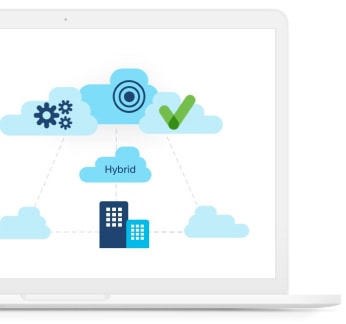Hybrid cloud versus hybrid IT
Hybrid cloud
In many cases, the term hybrid cloud is broadly used to reflect architecture frameworks that aim to achieve some integration between non-cloud (but cloud-inspired), on-premises environments, and public clouds.
Hybrid IT
Integrations can cover different domains, such as specific layers of compute infrastructure. Integrations can include moving a Kubernetes-based application between environments, such as networking and security. The result is to establish secure connectivity, user access, or policies per workloads between environments. These hybrid cloud architecture frameworks and operating models are better defined with the more encompassing term hybrid IT, which also includes multicloud scenarios.
Managing hybrid environments
In both hybrid cloud and hybrid IT environments, consistent management can be a challenge, typically due to heterogeneity and complexity. While newer technology standards enable some use cases for specific layers by abstracting the infrastructure dependencies (a good example is Kubernetes), the need for platform/cloud-agnostic operations tooling is still paramount in hybrid IT and hybrid cloud architectures.
A core concept of hybrid IT tools is the capability to provide consistency through central management and automation. Consistency is enabled by APIs conducting the translation between different standards and allowing for common governance and workflows.

